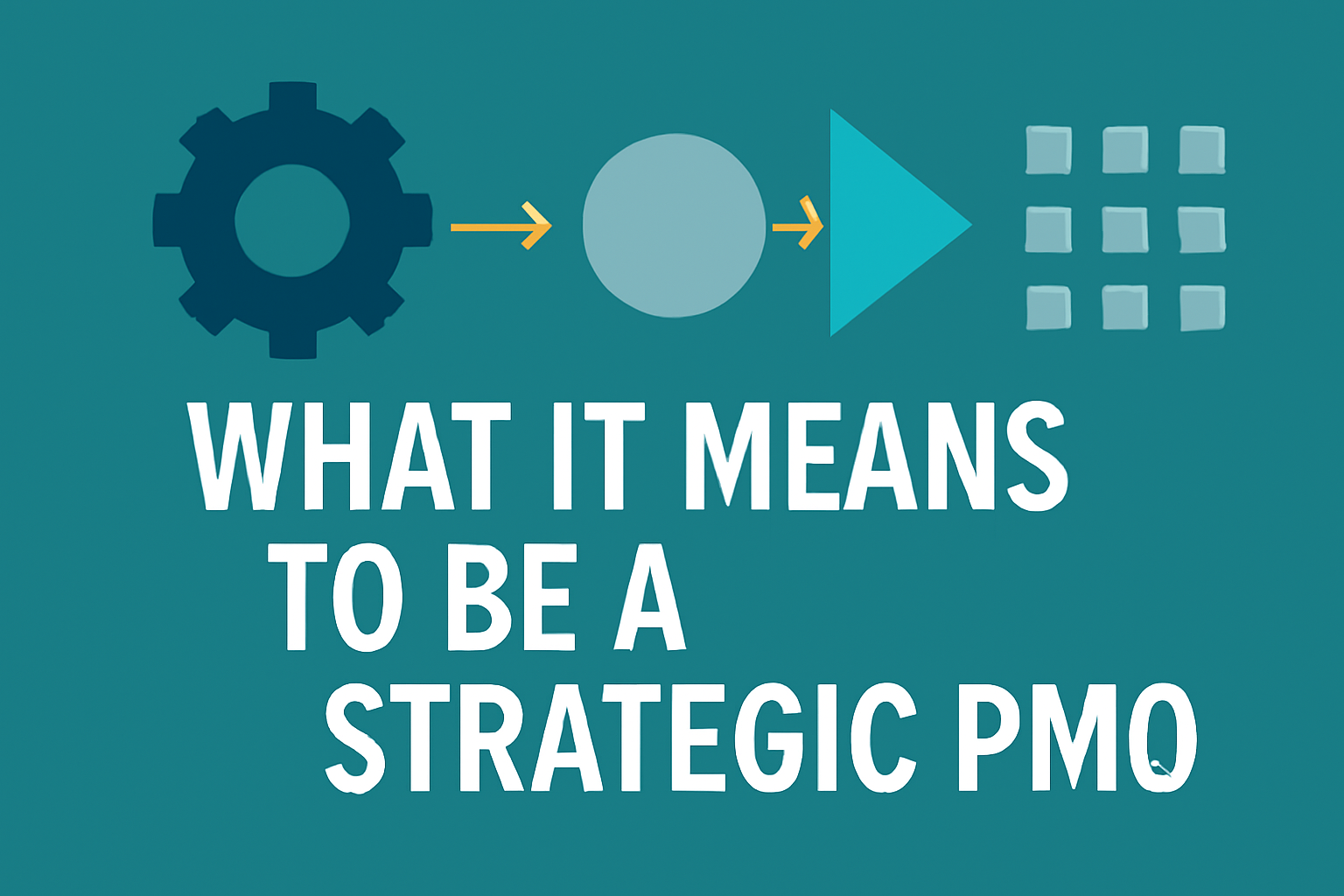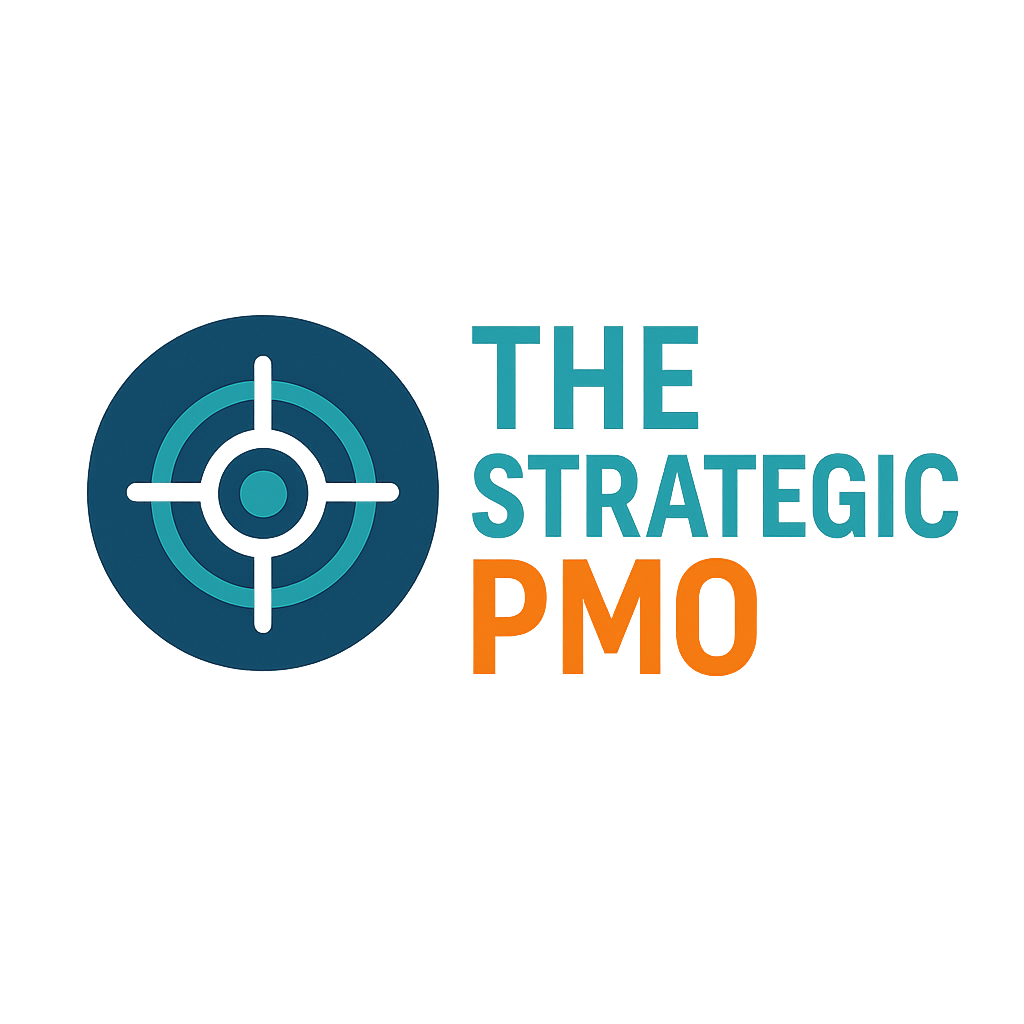What It Means to Be a Strategic PMO
The PMO isn’t dead—it’s evolving. A Strategic PMO connects enterprise strategy with execution through alignment, rhythm, metrics, and measurable impact.

Opening
When you hear “PMO,” what image comes to mind? Maybe a room full of Gantt charts, a stack of status slides, dashboards no one reads. You’ve likely even heard the old refrain: “The PMO is dead.”
I’ve heard it too. But here’s the thing: the real question isn’t whether the PMO is dead—it’s whether the PMO has earned its strategic seat at the table.
In today’s fast-moving, outcome-obsessed world, organizations don’t just need project oversight—they need a mechanism that turns strategy into clean execution. That’s what a Strategic PMO is. Not a relic of control and process, but a living, breathing engine of alignment, cadence and measurable value.
If your PMO still operates like a checkbox factory, this post is for you. Let’s define what “strategic” really means—and what it looks like in practice.
Defining “Strategic PMO” in Plain English
A traditional PMO often asks: “Are the projects on time and on budget?”
A strategic PMO instead asks: “Are the right projects delivering the right outcomes, at the right time, on the right budget?”
Put simply:
- Strategic = aligned, adaptive, value-driven.
- PMO = governance, mechanisms, people, data.
So a Strategic PMO is where strategy meets governance, and the PMO becomes the bridge between executive intent and operational reality.
That means:
- Every initiative must tie to a business objective—not just fill a backlog item.
- The cadence and mechanisms of the PMO aren’t arbitrary—they’re tuned to the enterprise rhythm.
- Metrics aren’t collected for collection’s sake—they tell the story of value delivered.
- The PMO isn’t static—it evolves as the business and its portfolio evolve.
In other words: you stop keeping the lights on. You start directing the lights to where they matter most.
Why “Strategic” Matters
Calling your PMO strategic isn’t just semantics—it’s a statement of intent.
- It defines identity. You’re not just managing projects; you’re enabling strategy.
- It raises the bar. The word strategic sets an expectation of value, influence and accountability.
- It signals partnership. Leaders don’t need another process police—they need a partner who connects execution with business outcomes.
- It sharpens focus. When the PMO is strategic, every process, meeting and metric has a clear purpose: advancing enterprise goals.
Being strategic changes how the PMO shows up. It shifts the mindset from compliance to connection, from process to purpose.
The Five Pillars of a Strategic PMO
These five pillars form the foundation of every high-performing strategic PMO—moving it from administrative oversight to true driver of business results.
1. Strategic Alignment
Everything starts with the question: Why are we doing this work? If projects don’t align with business priorities, they drain focus, resources and credibility.
Ensure every initiative maps directly to a defined objective, with clear success measures. Alignment isn’t a once-a-year exercise—it’s a constant discipline.
2. Prioritization & Value-Management
Not every idea deserves funding. A strategic PMO helps leadership make hard choices by evaluating each initiative through value, capacity and timing.
It’s not about managing project lists—it’s about shaping a portfolio that drives maximum return. Value—not volume—is the north star.
3. Delivery Rhythm & Operating Mechanisms
High-performing PMOs don’t rely on static plans—they operate through deliberate, repeatable rhythms that keep strategy connected to execution.
That means: weekly portfolio reviews to surface risks early; monthly business reviews to align on progress and pivots; quarterly look-backs to measure value delivered.
In a strategic PMO, you’re not the librarian—you’re the conductor. You keep everyone playing in tempo, removing noise, making sure the work moves in sync with the strategy.
4. Insightful Metrics That Drive Action
Data without context is noise. A strategic PMO uses metrics as instruments for decision-making, not trophies for reporting.
Track predictability, budget accuracy, benefit realization, portfolio alignment—not just “number of completed projects.” But more importantly: translate those numbers into stories leadership can act on.
In a truly strategic PMO, metrics don’t just inform—they influence.
5. Continuous Evolution
Strategy changes. Markets shift. Technology disrupts. A strategic PMO evolves with them.
Ask: Are our cadences still relevant? Are we still tracking what matters most? Do we still have the right seat at the table?
Treating the PMO as static means you’ll fall behind. Treating it as adaptive means you’ll stay strategic.
Strategic PMO vs Traditional PMO: A Quick Contrast
| Traditional PMO | Strategic PMO |
|---|---|
| Focuses on process adherence | Focuses on outcome delivery |
| Measures activity (# of projects, dashboards built) | Measures value (ROI, alignment, impact) |
| Reports status up the chain | Partners across functions and with executives |
| Operates in a predefined box | Adapts to changing business rhythm |
| Projects come in regardless of strategic fit | Projects are gated by strategic relevance |
If your PMO still checks off tasks but doesn’t advance strategy—you might have a traditional PMO wearing a “strategic” label.
How to Get Started (or Refocus)
If you’re reading this and thinking, “Yes—we need to do this,” here are your first moves:
- Clarify strategy linkage. Sit down with your executive team. What are this year’s strategic priorities? Map your full portfolio to those.
- Tighten intake. Build or refine your intake funnel: idea → strategic-fit assessment → prioritization → selection.
- Establish rhythm. Create governance cadences: weekly tactical reviews, monthly portfolio checks, quarterly value discussions.
- Measure what matters. Select a handful of metrics that reflect value, not just activity. Track trends, not noise.
- Inspect and adapt. Twice a year, review your own PMO. What’s adding value? What’s redundant? What needs evolution?
Closing
Being a Strategic PMO isn’t about having the biggest toolset, the strictest process, or the most templates. It’s about becoming the engine of execution—turning vision into results, chaos into clarity, intent into impact.
A truly Strategic PMO doesn’t just manage change—it enables it.
And if that’s where your organization is headed, you’re already halfway there.
